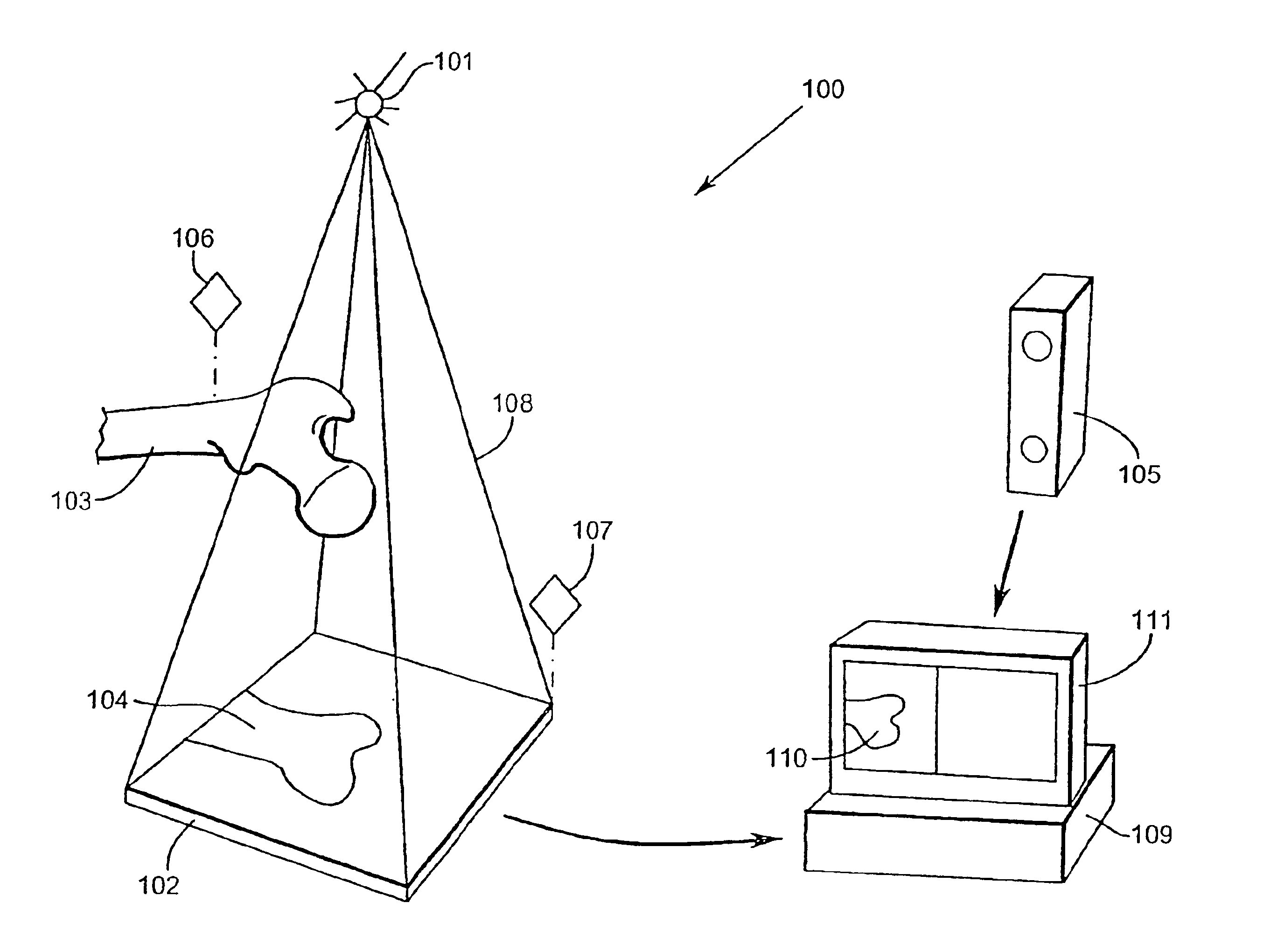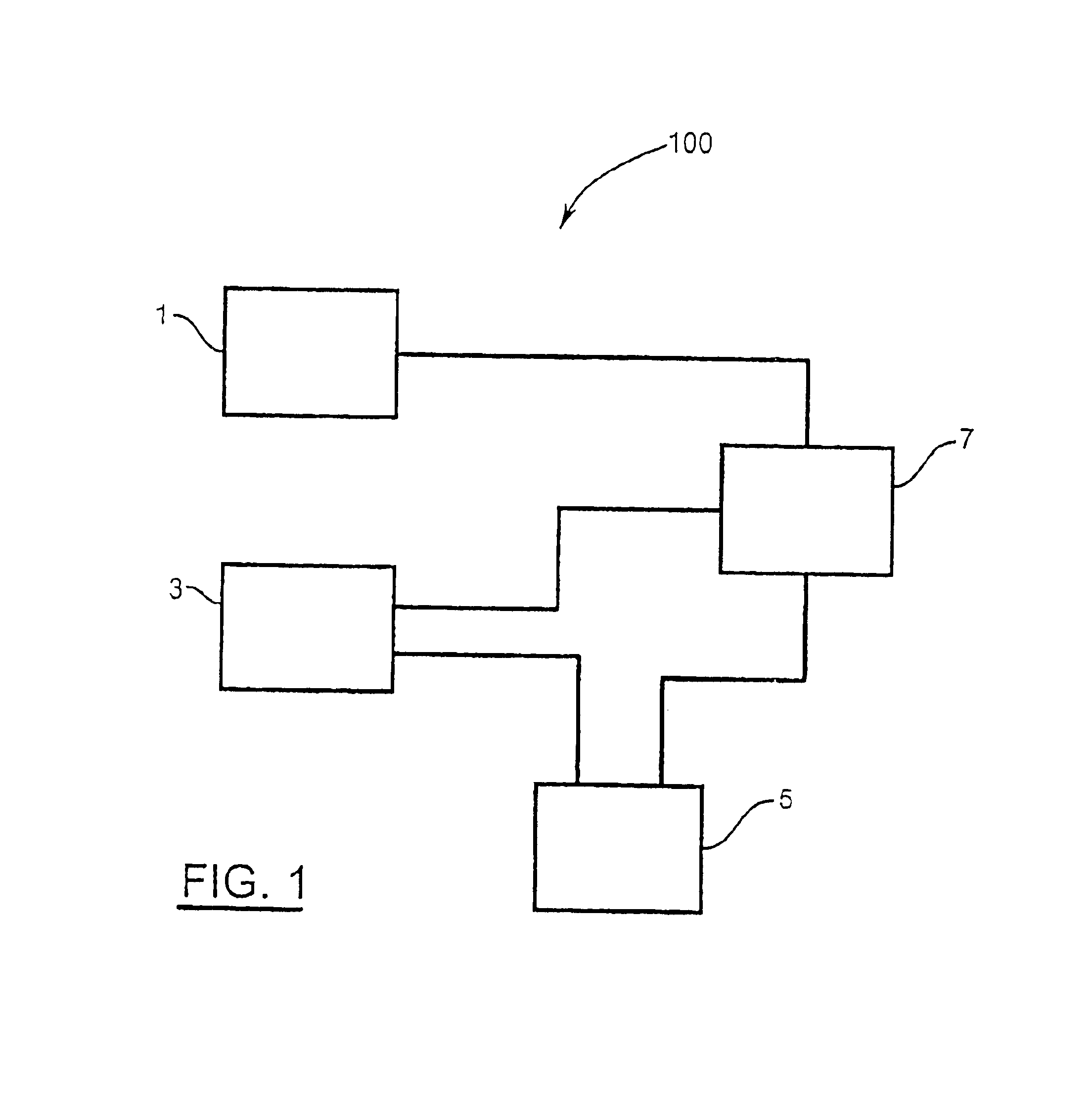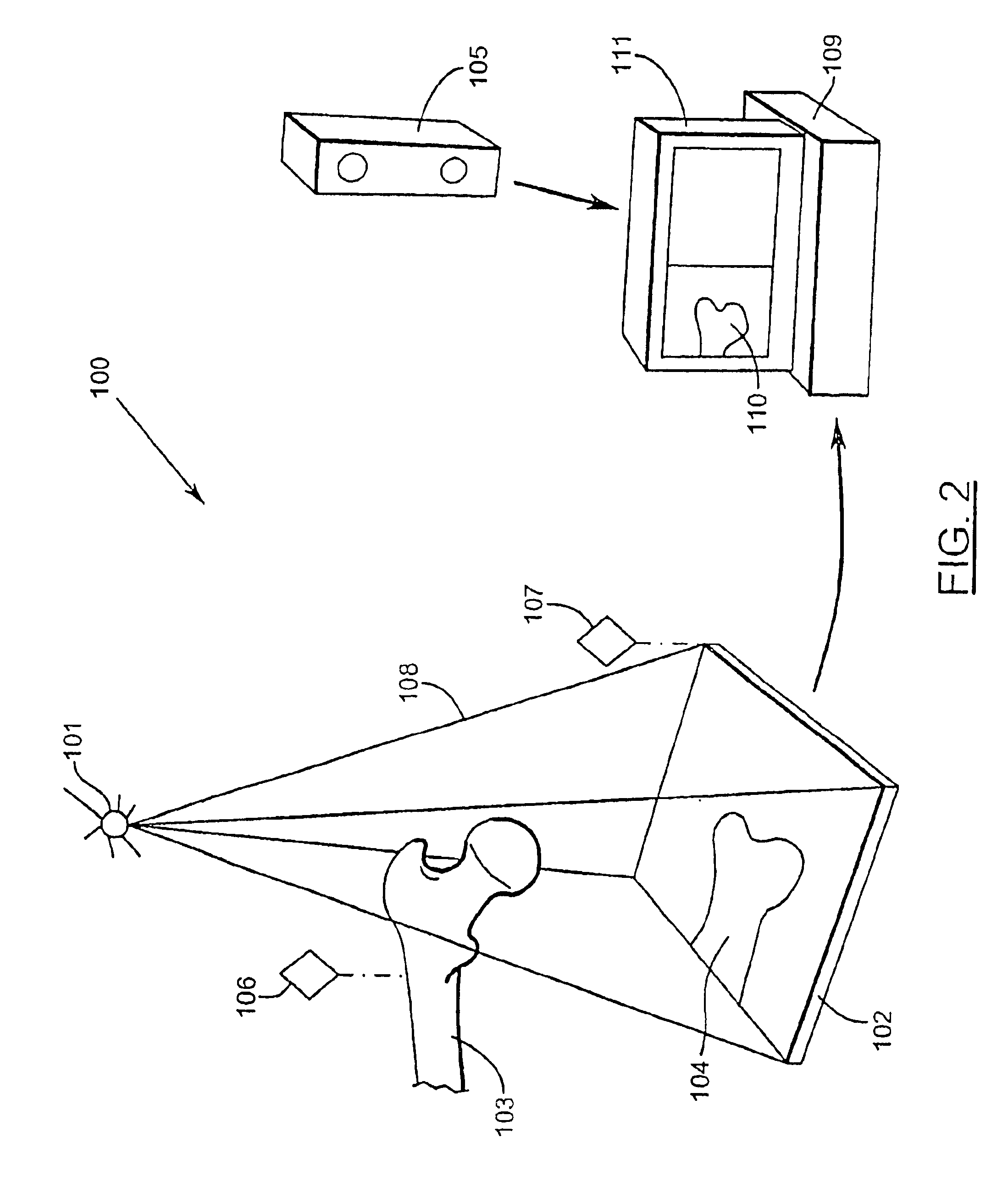Apparatuses and methods for surgical navigation
a surgical and apparatus technology, applied in the field of apparatus and methods for surgical navigation, can solve the problems of obstructing the surgeon physically, a plurality of fluoroscopic images, and unable to compute the derivatives and uses by automatic means,
- Summary
- Abstract
- Description
- Claims
- Application Information
AI Technical Summary
Benefits of technology
Problems solved by technology
Method used
Image
Examples
Embodiment Construction
[0056]Referring to FIG. 1, an imaging apparatus 100 is used for representing and manipulating three-dimensional geometry derived from multiple two-dimensional images.
[0057]For brevity, this paragraph defines certain terms that will be used in this description. The position and orientation of a geometrical entity or physical object will be called the “pose” of the entity or object, where it is understood that the orientation of a point is arbitrary and that the orientation of a line or a plane or other special geometrical objects may be specified with only two, rather than the usual three, orientation parameters. A geometrical entity with known three-dimensional geometry will hereafter be called a “guard”. A three-dimensional computer representation of the shape, surface, or volume of a geometrical entity will hereafter be called a “form”. A coordinate frame, relative to a physical object that is imaged by the imaging device, will hereafter be called an “anatomical coordinate frame”....
PUM
 Login to View More
Login to View More Abstract
Description
Claims
Application Information
 Login to View More
Login to View More - R&D
- Intellectual Property
- Life Sciences
- Materials
- Tech Scout
- Unparalleled Data Quality
- Higher Quality Content
- 60% Fewer Hallucinations
Browse by: Latest US Patents, China's latest patents, Technical Efficacy Thesaurus, Application Domain, Technology Topic, Popular Technical Reports.
© 2025 PatSnap. All rights reserved.Legal|Privacy policy|Modern Slavery Act Transparency Statement|Sitemap|About US| Contact US: help@patsnap.com



